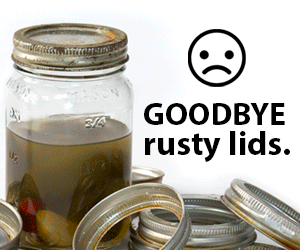Lard, a traditional cooking fat derived from pork, has been making a comeback in recent years due to its unique flavor, versatility, and health benefits. Rendering your own lard at home is a simple process that allows you to control the quality of the fat and ensure that it is free from additives. In this article, we will guide you through the process of rendering lard and provide tips on how to use it in your cooking.

What is Lard?
Lard is a type of animal fat that is extracted from pork through a process called rendering. It is primarily composed of monounsaturated and saturated fats, with a small amount of polyunsaturated fat. Lard has a high smoke point, making it suitable for high-heat cooking methods such as frying and roasting.

Benefits of Using Lard in Cooking
- Flavor: Lard imparts a rich, savory flavor to dishes, enhancing the taste of meats, vegetables, and baked goods.
- Texture: When used in baking, lard creates flaky, tender pastries and crusts.
- Health: Contrary to popular belief, lard is a healthier alternative to highly processed vegetable oils. It contains less polyunsaturated fat and is free from trans fats, which are associated with increased risk of heart disease.
- Versatility: Lard can be used in a wide range of dishes, from savory to sweet, and is suitable for various cooking methods.
How to Render Lard at Home
Ingredients and Equipment
- Pork fat (leaf lard or fatback)
- Large, heavy-bottomed pot or slow cooker
- Cheesecloth or fine-mesh strainer
- Glass jars for storage
Step-by-Step Instructions
- Cut the pork fat into small, uniform pieces, approximately 1 inch in size. This will help the fat render more evenly and quickly.
- Place the pork fat in a large, heavy-bottomed pot or slow cooker. If using a pot, set the heat to low. If using a slow cooker, set it to the “low” setting.
- Allow the fat to render slowly, stirring occasionally. This process can take several hours, depending on the amount of fat and the method used. The fat will gradually melt, and the solid pieces will turn crispy.
- Once the fat has fully rendered and the solid pieces (cracklings) have turned golden brown, remove the pot from the heat.
- Strain the liquid lard through a cheesecloth or fine-mesh strainer into glass jars. The cracklings can be saved for later use or discarded.
- Allow the lard to cool completely before sealing the jars. Store the lard in the refrigerator for up to 6 months or in the freezer for up to a year.

Tips for Successful Lard Rendering
- Choose high-quality pork fat, preferably from pasture-raised pigs, for the best flavor and nutritional value.
- Leaf lard, which comes from around the kidneys, is considered the highest quality and is ideal for baking. Fatback, which comes from the back of the pig, is better suited for savory dishes.
- Cut the fat into small, uniform pieces to ensure even rendering and prevent burning.
- Use a heavy-bottomed pot or slow cooker to prevent scorching and ensure even heat distribution.
- Render the lard slowly over low heat to avoid burning and to allow impurities to settle at the bottom of the pot.
- Strain the lard through a cheesecloth or fine-mesh strainer to remove any impurities or solid pieces.
- Store the lard in airtight containers in the refrigerator or freezer to prevent rancidity.

Using Lard in Cooking
Savory Dishes
- Frying: Lard is an excellent choice for frying due to its high smoke point. Use it to fry potatoes, chicken, or any other food that benefits from a crispy exterior.
- Roasting: Rub lard on meats, such as pork or chicken, before roasting to create a flavorful, crispy skin.
- Sautéing: Use lard to sauté vegetables, such as onions and garlic, for a rich, savory flavor.
- Grilling: Brush lard on grilled meats or vegetables for added flavor and to prevent sticking.
Baking
- Pie crusts: Lard creates exceptionally flaky and tender pie crusts. Use it alone or in combination with butter for a balance of flavor and texture.
- Biscuits: Incorporate lard into your biscuit dough for a light, flaky texture and rich flavor.
- Tamales: Lard is a traditional ingredient in tamale dough, providing a tender texture and enhancing the flavor of the filling.
- Tortillas: Use lard in homemade tortilla dough for a soft, pliable texture and authentic flavor.
Other Uses
- Seasoning cast iron: Lard can be used to season cast iron cookware, creating a natural non-stick surface and preventing rust.
- Soap making: Lard is a popular ingredient in homemade soaps, contributing to a creamy lather and moisturizing properties.
Conclusion
Rendering your own lard at home is a simple and rewarding process that allows you to enjoy the unique flavor, texture, and health benefits of this traditional cooking fat. By following the step-by-step instructions and tips provided in this article, you can successfully render lard and incorporate it into a wide range of savory and sweet dishes. Whether you’re frying, roasting, baking, or seasoning your cast iron, lard is a versatile and delicious addition to your cooking repertoire.















